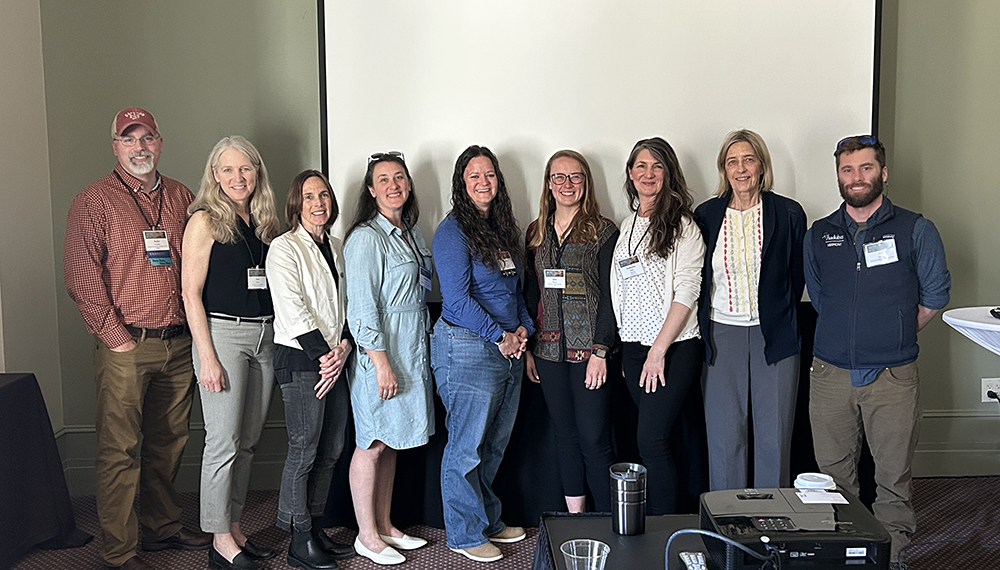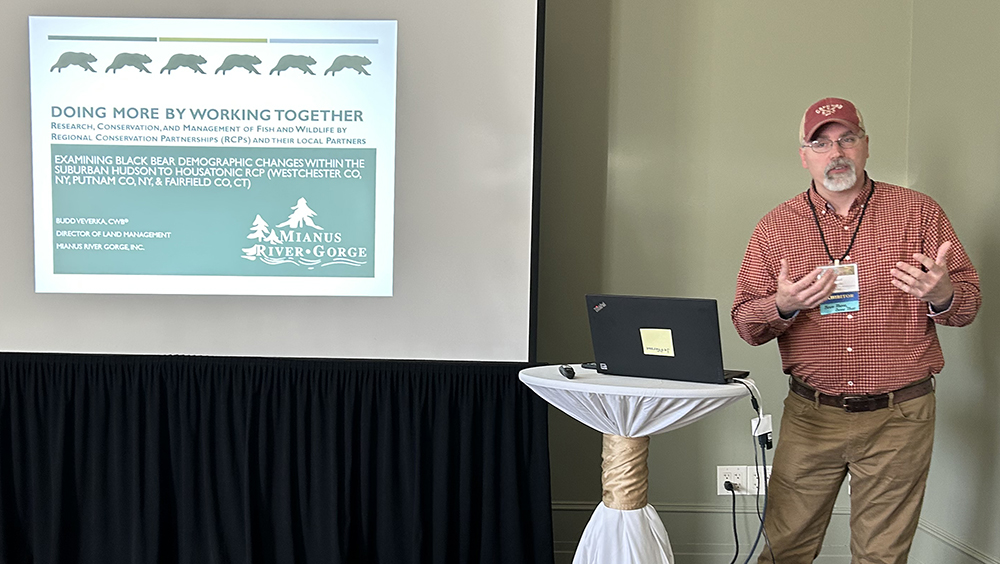Regional Conservation Partnerships (RCPs) exist because partners can be more productive when they work together. This past April, four RCPs and several partners came together at the 80th annual Northeast Fish & Wildlife Conference, sponsored by the Northeast Association of Fish & Wildlife Agencies (NEAFWA), to present their efforts to advance land protection, management, and research through the RCP Network.
Their symposium, “Doing More by Working Together: Research, Conservation, and Management of Fish and Wildlife by Regional Conservation Partnerships and their Local Partners,” showcased the impactful work of four RCPs: Cold Hollow to Canada, Blackstone Watershed Collaborative, Litchfield Hills Greenprint Collaborative, and Hudson to Housatonic RCP (H2H). Nine speakers shared their insights, highlighting the importance of local partnerships in landscape-scale wildlife conservation.

NEAFWA plays a pivotal role in the conservation of fish and wildlife resources across thirteen states, six Canadian provinces, and the District of Columbia. This quasi-governmental organization serves to enhance cooperation and understanding among its members by fostering communication and collaboration among various stakeholders, including government agencies, non-governmental organizations, academic institutions, and local communities.
Budd Veverka, Director of Land Management at the Mianus River Gorge and President of the Northeast Section of The Wildlife Society, had the vision for the RCP symposium. As the principal investigator for a black bear monitoring project in the Hudson to Housatonic region, he has seen firsthand the role RCPs play in supporting wildlife research and landscape conservation. “I wanted to bring leaders from RCPs across the Northeast to speak to the work they’ve done on research, management, and conservation of wildlife, and position them in front of an audience of fish and wildlife experts to create new connections,” he said.
“RCPs are local engines of conservation that collectively work together to effect regional change,” said Katie Blake, H2H Coordinator and Regional Conservationist at Highstead. “Our state and federal fish and wildlife partners are critical in this work.”
Connie Manes, Executive Director of the Kent Land Trust and lead partner of the Greenprint Collaborative said, “It was terrific to be able to present to what was for most of us a new audience. Not only did we demonstrate the leveraging power of working within RCPs and the larger RCP Network, we opened the doors to new interface and proactive partnership.” Similarly, Donna Merrill, Executive Director of the Pollinator Pathway, reported that it was well worth the trip to New Hampshire. “The conference demonstrated a core RCP principle about the power of learning from each other by connecting in dialogue,” she said.

“One of the ways RCPs are already collaborating regionally and in support of wildlife is through initiatives like the Northeast Bird Habitat Conservation Initiative (NBHCI),” said Blake. The NBHCI is a collaborative effort between the RCP Network, Audubon groups, Highstead, and the Cornell Lab of Ornithology aimed at expanding land protection through bird conservation.
“There are so many partnerships dedicated to helping conserve our landscape in so many ways,” said JoLeisa Cramer, one of the presenters. “Each of us works every day on our little slice of the puzzle, and this symposium really helped put into perspective how it all connects. Our web isn’t just impacting our daily work, but the larger-scale work of ecology in the Northeast.”